
Topsoil is the upper layer of soil. It has the highest concentration of organic matter and microorganisms and is where most of the Earth's biological soil activity occurs.

Topsoil is the upper layer of soil. It has the highest concentration of organic matter and microorganisms and is where most of the Earth's biological soil activity occurs.
Topsoil is composed of mineral particles and organic matter and usually extends to a depth of 5-10 inches (13–25 cm). Together these make a substrate capable of holding water and air which encourages biological activity.
There are generally a high concentration of roots in topsoil since this is where plants obtain most of their vital nutrients. It also plays host to significant bacterial, fungal and entomological activity without which soil quality would degrade and become less suitable for plants. Bacteria and fungi can be essential in facilitating nutrient exchange with plants and in breaking down organic matter into a form that roots can absorb. Insects also play important roles in breaking down material and aerating and rotating the soil. Many species directly contribute to the health of the soil resulting in stronger plants. [1] A healthy topsoil layer is a very rich microbiome that hosts a wide array of species. [2]
Organic matter provides nutrition for living organisms and varies in quantity between different soils with the strength of the soil structure decreasing when more is present. It condenses and settles over time in different ways depending upon conditions such as beneath roadbeds and foundations vs uncovered and exposed to the elements. The structure becomes affected once the soil is dehydrated. Dehydrated topsoil volume substantially decreases and may suffer wind erosion. [3]
Topsoil is naturally produced in the process of soil formation or pedogenesis. Natural topsoil is mined and conditioned for human use and makes up the bulk of commercial topsoil available. The current rate of use and erosion outpaces soil generation. [4]
It is possible to create artificial topsoil which supports some of the engineering or biological uses of topsoil. [4] More traditional examples of artificial plant-growth media include terra preta and potting mix. Manufactured topsoil based on minerals, biosolids, compost and/or paper mill sludge [5] is available commercially. [6] A Victorian open-cut coal mine was rehabilitated with low-quality artificial topsoil made from local materials. [7]
In soil classification systems, topsoil is known as the O Horizon or A Horizon. [8] [9] Soil horizons are layers parallel to the soil surface whose physical, chemical and biological characteristics differ from the layers above and beneath. The depth of the topsoil layer is measured as the depth of the surface to the first densely packed soil layer, known as subsoil.
In the United States, there is no federal, legal definition of the word topsoil when used in commerce.
Organisations such as the British Standards Institution (BSI) and the North Carolina Department of Agriculture publish guidelines for soil quality and the desired levels of topsoil nutrients broadly suitable for many plants. [10]
| Category | Desired Results |
|---|---|
| pH Level | 5.0 to 6.2 |
| Phosphorus (P-I) | Index of 50 |
| Potassium (K-I) | Index of 50 |
| Calcium (Ca%) | 40-60% of Cation Exchange Capacity (CEC) |
| Magnesium (Mg%) | 8-10% of CEC |
| Base saturation (BS%) | 35-80% of CEC |
| Manganese (Mn-I) | Index > 25 |
| Zinc (Zn-I) | Index > 25 |
| Copper (Cu-I) | Index > 25 |
Two common types of commercial topsoil are Bulk and Bagged Topsoil. The following table illustrates major differences between the two. [10]
| Topsoil Type | HM% [lower-alpha 1] | BS% | pH | P-I | K-I | Ca% | Mg% |
|---|---|---|---|---|---|---|---|
| Bulk | 0.3 | 69 | 5.2 | 009 | 026 | 45 | 10 |
| Bagged | 0.7 | 78 | 5.8 | 166+ | 178 | 56 | 12.3 |
Alternatively the BSI relates the following values:
| Category | Desired Results |
|---|---|
| pH Level | 5.5 to 8.5 |
| Phosphate (PO4) | 16 to 140 mg/L |
| Potassium (K) | 121 to 1500 mg/L |
| Magnesium (Mg) | 51 to 600 mg/L |
| Nickel (Ni) | from <60 mg/kg |
| Zinc (Zn) | from <200 mg/kg |
| Copper (Cu) | from <100 mg/kg |
The preceding tables are for a multipurpose grade and certain levels can alter with regard to soil pH.
Standards also exist for specialist soils suitable for plants with specific needs including acidic or ericaceous soil and calcareous soil. These have different pH levels to typical soil and are meant for growing different plant species. Low fertility, low fertility acidic and low fertility calcareous are other soil classifications designed for plants which thrive in nutrient sparse soil.
Examples of specialist plants include the Venus flytrap which is found in low nitrogen and phosphorus environments so is less tolerant of highly nutrient rich environments than other plants and less able to compete in them. Whereas blueberries require ericaceous soil to grow well and clover grows well in calcareous soil. Soils must therefore be selected to suit the plants which are intended to be grown and hence standards are required.
Topsoil is the primary resource for plants to grow and crops to thrive. The main two parameters for this are carbon and nitrogen. The carbon provides energy and nitrogen is required for plants to build proteins and hence tissues. Plants require them in a range of ratios to enable suitable growth. An optimum figure for topsoil in the UK is a C:N ratio of less than 20:1. A sawdust base typically has a high C:N ratio in the order of 400:1 while an alfalfa hay has a low carbonaceous content and can typically have a C:N ratio around 12:1. [11]
A variety of soil mixtures are sold commercially as topsoil. Typical uses for this product are improving gardens and lawns or for use in container gardens. Potting soil, compost, manure and peat are also sold for domestic uses with each having specific intended purposes. Topsoil products typically are not as suitable for potting plants or growing fruit and veg as potting soil or compost. Using it for this purpose can also work out prohibitively expensive compared to other alternatives.
Topsoil is also used for proper surface grading near residential buildings. In order to protect against flooding the International Residential Code requires a 2% slope (2.4 in (61 mm)) for the first ten feet away from the home. [12] Energy Star requires a rate of 0.5 in/ft (42 mm/m).
Commercially available topsoil (manufactured or naturally occurring) in the United Kingdom must be classified to British Standard BS 3882, with the current version dated 2015. The standard has several classifications of topsoil with the final classification requiring material to meet certain threshold criteria such as nutrient content, extractable phytotoxic elements, particle size distribution, organic matter content, carbon:nitrogen ratio, electrical conductivity, loss on ignition, pH, chemical and physical contamination. The topsoil must be sampled in accordance with the British Standard and European Norm BS EN 12579:2013 Soil improvers and growing media – Sampling. [13]
Topsoil erosion occurs when the topsoil layer is blown or washed away. The estimated annual costs of public and environmental health losses related to soil erosion in the United States exceed $45 billion. [14] Conventional industrial agriculture practices such as ploughing and spraying high quantities of synthetic liquid fertilisers can degrade the quality of the soil. Intensive farming methods to satisfy high food demands with high crop yields and growing crops in monocultures can deplete the soil nutrients and damage the soil microbiome. These factors can affect the consistency and quality of the soil resulting in increased erosion.
Surface runoff from farm fields is a type of nonpoint source pollution. Topsoil as well as farm fertilizers and other potential pollutants run off unprotected farm fields when heavy rains occur. This can result in polluting waterways and groundwater and may potentially contaminate drinking water sources. Algae blooms can occur when high quantities of nutrients flood rivers, lakes or oceans often as a result of farm runoff or from sewage. These harmful algal blooms can be toxic and have devastating impacts on ecosystems and wildlife. They are often referred to as red tides due to the presence of toxic red algae which can impact human food sources by contaminating seafood. [15]
Sustainable techniques attempt to slow erosion through the use of cover crops in order to build organic matter in the soil. The United States loses almost 3 tons of topsoil per acre per year. [16] 1 inch (2.5 cm) of topsoil can take between 500 [17] and 1,000 years [18] to form naturally, making the rate of topsoil erosion a serious ecological concern. Based on 2014 trends, the world has about 60 years of topsoil left. [18] [19]


Soil conservation is the prevention of loss of the topmost layer of the soil from erosion or prevention of reduced fertility caused by over usage, acidification, salinization or other chemical soil contamination.
Slash-and-burn and other unsustainable methods of subsistence farming are practiced in some lesser developed areas. A consequence of deforestation is typically large-scale erosion, loss of soil nutrients and sometimes total desertification. Techniques for improved soil conservation include crop rotation, cover crops, conservation tillage and planted windbreaks, affect both erosion and fertility. When plants die, they decay and become part of the soil. Code 330 defines standard methods recommended by the U.S. Natural Resources Conservation Service. Farmers have practiced soil conservation for millennia. In Europe, policies such as the Common Agricultural Policy are targeting the application of best management practices such as reduced tillage, winter cover crops, [20] plant residues and grass margins in order to better address soil conservation. Political and economic action is further required to solve the erosion problem. A simple governance hurdle concerns how we value the land and this can be changed by cultural adaptation. [21] Soil carbon is a carbon sink, playing a role in climate change mitigation. [22]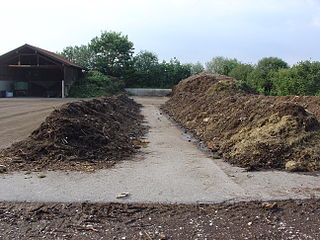
Compost is a mixture of ingredients used as plant fertilizer and to improve soil's physical, chemical, and biological properties. It is commonly prepared by decomposing plant and food waste, recycling organic materials, and manure. The resulting mixture is rich in plant nutrients and beneficial organisms, such as bacteria, protozoa, nematodes, and fungi. Compost improves soil fertility in gardens, landscaping, horticulture, urban agriculture, and organic farming, reducing dependency on commercial chemical fertilizers. The benefits of compost include providing nutrients to crops as fertilizer, acting as a soil conditioner, increasing the humus or humic acid contents of the soil, and introducing beneficial microbes that help to suppress pathogens in the soil and reduce soil-borne diseases.

Soil, also commonly referred to as earth or dirt, is a mixture of organic matter, minerals, gases, liquids, and organisms that together support the life of plants and soil organisms. Some scientific definitions distinguish dirt from soil by restricting the former term specifically to displaced soil.

Crop rotation is the practice of growing a series of different types of crops in the same area across a sequence of growing seasons. This practice reduces the reliance of crops on one set of nutrients, pest and weed pressure, along with the probability of developing resistant pests and weeds.

In agriculture, a green manure is a crop specifically cultivated to be incorporated into the soil while still green. Typically, the green manure's biomass is incorporated with a plow or disk, as is often done with (brown) manure. The primary goal is to add organic matter to the soil for its benefits. Green manuring is often used with legume crops to add nitrogen to the soil for following crops, especially in organic farming, but is also used in conventional farming.

In agriculture, cover crops are plants that are planted to cover the soil rather than for the purpose of being harvested. Cover crops manage soil erosion, soil fertility, soil quality, water, weeds, pests, diseases, biodiversity and wildlife in an agroecosystem—an ecological system managed and shaped by humans. Cover crops can increase microbial activity in the soil, which has a positive effect on nitrogen availability, nitrogen uptake in target crops, and crop yields. Cover crops reduce water pollution risks and remove CO2 from the atmosphere .Cover crops may be an off-season crop planted after harvesting the cash crop. Cover crops are nurse crops in that they increase the survival of the main crop being harvested, and are often grown over the winter. In the United States, cover cropping may cost as much as $35 per acre.

No-till farming is an agricultural technique for growing crops or pasture without disturbing the soil through tillage. No-till farming decreases the amount of soil erosion tillage causes in certain soils, especially in sandy and dry soils on sloping terrain. Other possible benefits include an increase in the amount of water that infiltrates into the soil, soil retention of organic matter, and nutrient cycling. These methods may increase the amount and variety of life in and on the soil. While conventional no-tillage systems use herbicides to control weeds, organic systems use a combination of strategies, such as planting cover crops as mulch to suppress weeds.

Nutrient management is the science and practice directed to link soil, crop, weather, and hydrologic factors with cultural, irrigation, and soil and water conservation practices to achieve optimal nutrient use efficiency, crop yields, crop quality, and economic returns, while reducing off-site transport of nutrients (fertilizer) that may impact the environment. It involves matching a specific field soil, climate, and crop management conditions to rate, source, timing, and place of nutrient application.

Soil fertility refers to the ability of soil to sustain agricultural plant growth, i.e. to provide plant habitat and result in sustained and consistent yields of high quality. It also refers to the soil's ability to supply plant/crop nutrients in the right quantities and qualities over a sustained period of time. A fertile soil has the following properties:
Tilth is a physical condition of soil, especially in relation to its suitability for planting or growing a crop. Factors that determine tilth include the formation and stability of aggregated soil particles, moisture content, degree of aeration, soil biota, rate of water infiltration and drainage. Tilth can change rapidly, depending on environmental factors such as changes in moisture, tillage and soil amendments. The objective of tillage is to improve tilth, thereby increasing crop production; in the long term, however, conventional tillage, especially plowing, often has the opposite effect, causing the soil carbon sponge to oxidize, break down and become compacted.
Biointensive agriculture is an organic agricultural system that focuses on achieving maximum yields from a minimum area of land, while simultaneously increasing biodiversity and sustaining the soil fertility. The goal of the method is long term sustainability on a closed system basis. It is particularly effective for backyard gardeners and smallholder farmers in developing countries, and also has been used successfully on small-scale commercial farms.
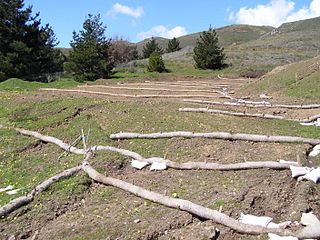
Soil conservation is the prevention of loss of the topmost layer of the soil from erosion or prevention of reduced fertility caused by over usage, acidification, salinization or other chemical soil contamination.

Organic fertilizers are fertilizers that are naturally produced. Fertilizers are materials that can be added to soil or plants, in order to provide nutrients and sustain growth. Typical organic fertilizers include all animal waste including meat processing waste, manure, slurry, and guano; plus plant based fertilizers such as compost; and biosolids. Inorganic "organic fertilizers" include minerals and ash. The organic-mess refers to the Principles of Organic Agriculture, which determines whether a fertilizer can be used for commercial organic agriculture, not whether the fertilizer consists of organic compounds.
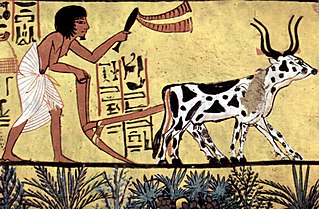
Agricultural soil science is a branch of soil science that deals with the study of edaphic conditions as they relate to the production of food and fiber. In this context, it is also a constituent of the field of agronomy and is thus also described as soil agronomy.

Soil biology is the study of microbial and faunal activity and ecology in soil. Soil life, soil biota, soil fauna, or edaphon is a collective term that encompasses all organisms that spend a significant portion of their life cycle within a soil profile, or at the soil-litter interface. These organisms include earthworms, nematodes, protozoa, fungi, bacteria, different arthropods, as well as some reptiles, and species of burrowing mammals like gophers, moles and prairie dogs. Soil biology plays a vital role in determining many soil characteristics. The decomposition of organic matter by soil organisms has an immense influence on soil fertility, plant growth, soil structure, and carbon storage. As a relatively new science, much remains unknown about soil biology and its effect on soil ecosystems.
Soil biodiversity refers to the relationship of soil to biodiversity and to aspects of the soil that can be managed in relative to biodiversity. Soil biodiversity relates to some catchment management considerations.
Soil management is the application of operations, practices, and treatments to protect soil and enhance its performance. It includes soil conservation, soil amendment, and optimal soil health. In agriculture, some amount of soil management is needed both in nonorganic and organic types to prevent agricultural land from becoming poorly productive over decades. Organic farming in particular emphasizes optimal soil management, because it uses soil health as the exclusive or nearly exclusive source of its fertilization and pest control.
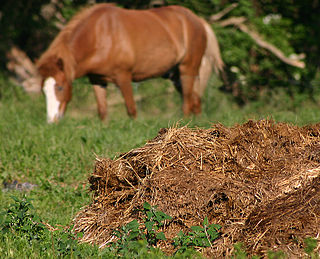
Manure is organic matter that is used as organic fertilizer in agriculture. Most manure consists of animal feces; other sources include compost and green manure. Manures contribute to the fertility of soil by adding organic matter and nutrients, such as nitrogen, that are utilised by bacteria, fungi and other organisms in the soil. Higher organisms then feed on the fungi and bacteria in a chain of life that comprises the soil food web.
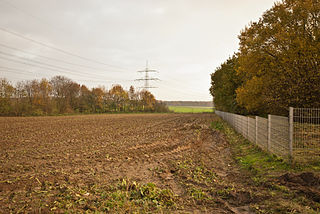
Soil compaction, also known as soil structure degradation, is the increase of bulk density or decrease in porosity of soil due to externally or internally applied loads. Compaction can adversely affect nearly all physical, chemical and biological properties and functions of soil. Together with soil erosion, it is regarded as the "costliest and most serious environmental problem caused by conventional agriculture."
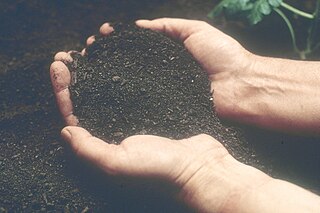
Soil regeneration, as a particular form of ecological regeneration within the field of restoration ecology, is creating new soil and rejuvenating soil health by: minimizing the loss of topsoil, retaining more carbon than is depleted, boosting biodiversity, and maintaining proper water and nutrient cycling. This has many benefits, such as: soil sequestration of carbon in response to a growing threat of climate change, a reduced risk of soil erosion, and increased overall soil resilience.
Constructed soils are mixtures of organic and mineral material derived from a number of sources, including repurposed organic waste, that are designed to approximate natural soils and provide a growing medium for plants. Constructed soils are commonly used in the reclamation of degraded land where natural topsoil is either not present or has been contaminated. Examples of these sites include mines, landfills, and other industrial or urban areas. Constructed soils are classified as Technosols, and often form the upper layer, or layers, in a Technosol above a geomembrane or other barrier capping waste material.